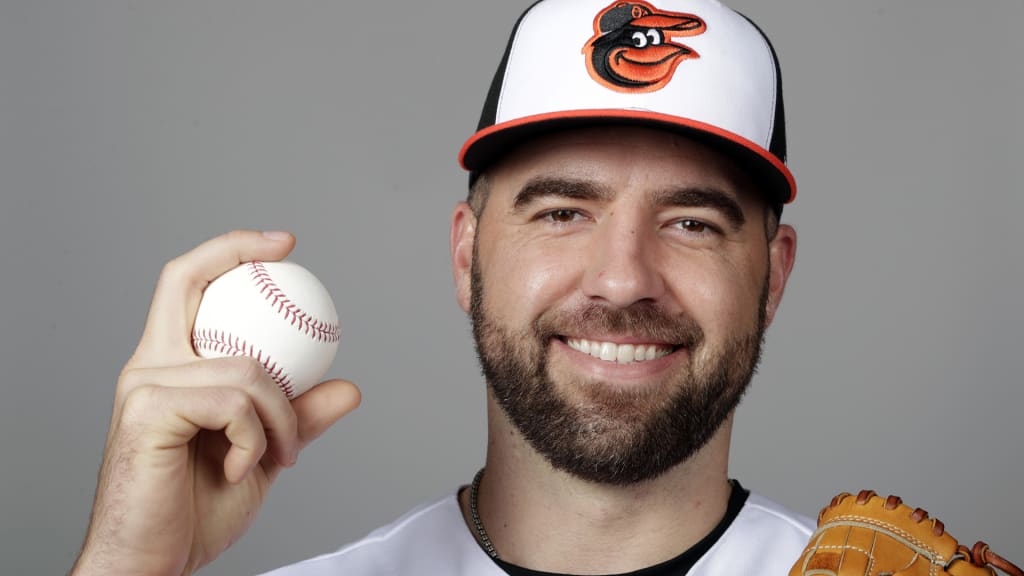O's announce Karns as 'opener'

The Orioles revealed Tuesday that they'll be the first Major League team to use an opener in 2019, with right-hander Nate Karns to start on Saturday against the Yankees in the Bronx. Karns was signed over the winter to fill the club's No. 4 starter role but never got stretched out during spring and broke camp in Baltimore's bullpen.
Now Karns will end up starting after all, and sooner than expected. Dylan Bundy will follow on Sunday, with David Hess going on Monday.
A career starter, Karns made all but one of his seven appearances this spring in relief, never going more than six outs. He shouldn't be expected to go much longer Saturday in New York, where temperatures are projected in the low 50s and the Yankees are set to trot out their power-laden lineup.
Who he'll be followed by likely hinges on how many arms first-year skipper Brandon Hyde uses Thursday behind Andrew Cashner, who is filling in on Opening Day for the injured Alex Cobb. Baltimore brought several multi-inning options north for this reason, including Jimmy Yacabonis, John Means and Pedro Araujo. Friday's off-day should give the trio flexibility to cover innings behind Karns.
But back to the opener. Let's break down the decision.
Why are they using it?
The O's are filling gaps in the rotation after their three veteran starters. Cobb, Bundy and Cashner will get their starts; any finagling with their usage likely comes on the back end, i.e., how often they’ll face lineups a third time through. The Orioles are far less certain about how they’ll deploy their pitchers every fourth and fifth day, though the calculus shifted when Cobb tweaked his groin last weekend.
Who might they use it against?
The Yankees, Angels, Astros, Rangers, Dodgers and Giants are all potential candidates. This is where matchups come in.
The Yankees seemed like the most likely opponent within the American League East, which is why Tuesday's decision doesn't come as a big surprise. Besides switch-hitting Aaron Hicks (when healthy) and Brett Gardner, every other Yankees regular hits from the right side. The Angels and Astros both heavily skew right-handed as well.
Teams that lean left are scarcer, but the Rangers, with Joey Gallo, Shin-Soo Choo, Nomar Mazara and Rougned Odor, certainly apply. The Giants and Dodgers, who Baltimore will face in Interleague Play, do too.
Does Karns fit the bill?
There's no question as to Karns' fit at the beginning of games, but how he'll respond to filling an unconventional role (and the altered preparation/recovery process/routine it would require) after two years battling arm injuries is unknown. Karns missed all of 2018 with right elbow issues after being groomed to be the Royals closer. His career strikeout rate of more than a batter per inning (9.3 per nine) certainly profiles well for shorter stints.
Who else might work?
When asked recently, Hyde said the Orioles have "12 or 13" pitchers who could qualify. So, in a word: everybody. The three listed below profile particularly well.
LHP Paul Fry: The left-hander earned the first (and only) "psuedo-opener" assignment in spring, pitching the first 1 2/3 innings of a split-squad game last weekend against the Phillies. Fry posted reverse splits over 35 appearances as a rookie in 2018. But those may end up being an aberration for the slider-dependent southpaw who looks like a lefty specialist. If Fry learns to get righties out, he’d make a perfect opener candidate. Fry started occasionally in the Minors and was asked to throw multiple innings often last season.
This browser does not support the video element.
RHP Miguel Castro: Something of a wild card in a bullpen full of them, Castro may end up as the closer, he may end up in middle relief, or he may end up a high-leverage option. But if the Orioles are looking for a right-handed specialist, Castro probably profiles as the best one they have besides Mychal Givens, who likely won’t factor into any experimenting.
Unlike Givens, Castro is a converted starter who has started games in a pinch at the big league level. He also presents a difficult assignment for righties, given his velocity, arm angle and high-spin slider.
RHP Jimmy Yacabonis: No stranger to change role-wise, Yacabonis has started games, finished them, pitched in middle relief and has been building up as a swingman this spring. His struggles facing hitters a second time (.340 batting average against the second time through the order, compared to a .172 mark the first time in 2018) mean the Orioles probably piggyback Yacabonis if he earns any starts this season; whether he’s considered an “opener” or not is mere semantics.